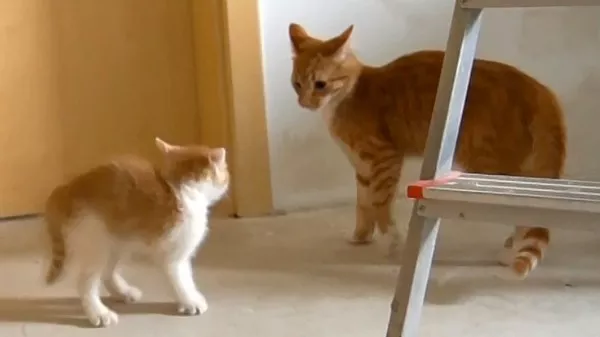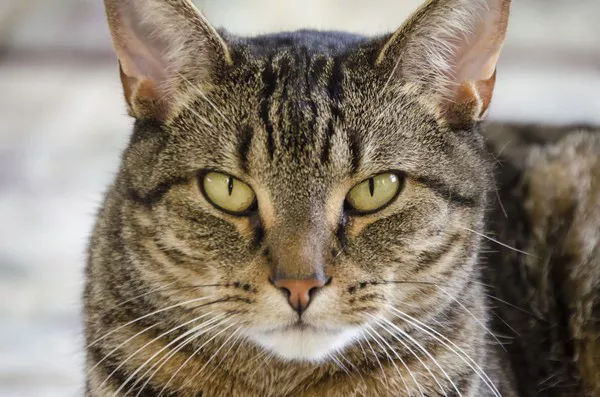When you leave your cat at a cattery, it’s not only an emotional experience for you but also for your feline friend. Cats, being independent creatures, have their own unique ways of processing new situations. Understanding how they perceive being placed in a cattery can help ease your concerns and ensure that the experience is as stress-free as possible for both you and your cat. This article delves into the thoughts and feelings your cat might have when staying in a cattery and offers insights on how to help them adjust.
What Is a Cattery and How Do Cats Experience It?
A cattery is essentially a boarding facility for cats. It’s a place where your feline can stay while you’re away. These establishments provide a safe and comfortable environment for cats, with designated spaces where they can relax, play, and interact with caregivers. While this sounds like a good deal for your cat, it’s important to recognize that being in a cattery is a significant change in their routine and environment. How they perceive this change depends on their personality, experiences, and the quality of the cattery.
For many cats, being in a new and unfamiliar place can trigger feelings of stress and anxiety. Unlike dogs, who tend to be more social and adaptable in new situations, cats are often more territorial and sensitive to changes in their environment. As a result, their thoughts might include confusion, discomfort, and even fear when first introduced to a cattery.
What Do Cats Think When Put in a Cattery?
When you first drop off your cat at the cattery, they may experience an array of emotions, starting with confusion. Cats are creatures of habit and thrive in their familiar environments. The sudden change in surroundings can make them feel disoriented. The unfamiliar smells, sounds, and sights of the cattery will likely overwhelm them at first.
Separation Anxiety: Cats can experience separation anxiety when separated from their owners. This is especially true if your cat is particularly bonded to you. They may feel anxious or worried, wondering why they are being left behind and when you will return. The presence of other animals and unfamiliar caregivers may heighten this anxiety, making them feel vulnerable and isolated.
Fear of New Surroundings: In a cattery, your cat will encounter a host of unfamiliar stimuli. The sounds of other cats meowing, the unfamiliar scent of the space, and the sight of strangers can all be overwhelming. Some cats are naturally more sensitive to change, so it’s not uncommon for them to hide or retreat into their space when first introduced to the cattery.
Disrupted Routine: Cats are known for their love of routine. Whether it’s mealtime, playtime, or nap time, your cat is used to certain patterns in their daily life. The disruption of this routine—along with the change in environment—can make your cat feel stressed. The food, sleep schedules, and activities in the cattery may not match what they are accustomed to at home, leading to further anxiety.
What Do Cats Think of the Caregivers in the Cattery?
The caregivers at a cattery play a crucial role in making your cat feel at ease. While some cats may warm up to the staff quickly, others might take longer to build trust. It’s important to note that cats are naturally cautious animals, and their trust is earned over time.
Initial Distrust: At first, your cat may feel a sense of distrust toward the caregivers. They may not recognize them as a familiar person and, in turn, might be hesitant to interact with them. Cats rely heavily on their sense of smell and sight to identify people and other animals, so the new smells of the caregivers may cause them to feel uncertain.
Observational Behavior: Cats are keen observers and often take their time assessing new situations. They may quietly observe the caregivers from a distance, studying their movements and trying to gauge whether they are safe to approach. Some cats may hide at first and only come out when they feel more comfortable.
Seeking Comfort: Over time, cats may begin to seek comfort from the staff once they sense that the caregivers are trustworthy. They may allow themselves to be pet, receive food, or even interact more actively with the staff. This shift in behavior signifies that they are starting to feel secure in their new environment.
Socializing with Other Cats in the Cattery
One aspect of cattery life that can be particularly stressful for some cats is interacting with other cats. Not all cats are social, and many prefer solitude or the company of a few familiar feline friends. For cats that are more independent or territorial, the presence of unfamiliar cats can lead to stress, tension, or even aggression.
Territorial Instincts: Cats are territorial by nature. When placed in a cattery with other cats, they may feel the need to assert their dominance or claim their space. This can lead to hissing, growling, or even aggressive behavior. Some cats may retreat to their designated space to avoid confrontation, while others may try to establish boundaries through body language or vocalizations.
Social Cats: On the other hand, some cats are naturally more social and may find comfort in the presence of other cats. They may enjoy the companionship, especially if they are placed in a communal room where they can interact and play. These cats may form bonds with their fellow boarders and find reassurance in their company.
Isolation vs. Interaction: Many catteries offer different boarding options, such as private rooms or group play areas. If your cat is not comfortable around other cats, a private room may be the best choice. However, if they enjoy interaction, they may thrive in a more social environment where they can engage with their peers.
How Do Cats Process the Absence of Their Owners?
Cats are known for their independence, but they still form strong bonds with their human companions. When you leave your cat at the cattery, they may wonder where you are and why you are not there to take care of them. This can create feelings of loneliness and confusion, especially if your cat has never been boarded before.
Bonding with You: Cats bond with their owners through daily interactions. They become accustomed to their scent, voice, and presence. When you leave, they may feel a sense of abandonment, especially if they are used to having you around. This emotional response can be more pronounced in cats that have a strong attachment to their owners.
Trusting the Caregivers: Once your cat realizes that the caregivers are providing food, comfort, and attention, they may start to trust them. However, this process can take time. Some cats may take longer to warm up to new people and environments, while others may quickly adapt.
Waiting for Your Return: Many cats are capable of understanding the concept of time, although it’s unclear how exactly they perceive it. Your cat may not fully comprehend when you will return, but they may show signs of anticipation as the time approaches. For example, they may become more vocal, active, or excited when they sense that you’re about to come back.
Cattery Features That Can Help Cats Feel More Comfortable
While the cattery environment may initially be overwhelming for your cat, there are several features that can help minimize stress and make the experience more comfortable:
Comfortable Space: The cattery should provide a comfortable, clean, and quiet space for your cat to rest. Cats need a safe place to retreat to when they’re feeling stressed or anxious. Many catteries offer private rooms or cozy areas where your cat can curl up and relax.
Familiar Items: Bringing along familiar items from home, such as a favorite blanket, bed, or toy, can help your cat feel more at ease. The familiar scent of these items can provide comfort and reassurance in an unfamiliar environment.
Interactive Caregivers: Cats thrive on positive interactions with their caregivers. Look for a cattery where the staff are not only experienced in caring for cats but also understand their behavior and needs. Cats that receive attention, petting, and playtime from the caregivers will feel more secure and comfortable.
Consistent Routine: As much as possible, the cattery should try to maintain a consistent routine for feeding, playtime, and care. This can help reduce stress by providing a sense of predictability and normalcy in the midst of the change in environment.
How to Help Your Cat Adjust to a Cattery
While the cattery experience might initially be stressful for your cat, there are several ways you can help them adjust:
Pre-boarding Visits: Before leaving your cat at the cattery, schedule a visit to familiarize them with the environment. Some catteries allow pre-boarding visits, where your cat can explore the space and meet the caregivers. This can help reduce the initial shock of being placed in a new environment.
Gradual Introduction: If possible, gradually introduce your cat to the cattery by spending a few hours there with them. This can give your cat a chance to acclimate to the new surroundings while still having your presence as a source of comfort.
Keep Your Goodbye Short and Positive: When you drop your cat off, try to keep the goodbye brief and positive. Cats can pick up on your emotions, so showing them that you’re confident and calm will help them feel more secure. Prolonged goodbyes can make the experience more stressful for both you and your cat.
Stay in Touch: Many catteries offer updates or even video calls to reassure you that your cat is doing well. While your cat may not understand the concept of video calls, hearing your voice can provide comfort and let you know that they are being cared for.
Conclusion
Leaving your cat at a cattery is a big decision, and it’s natural to wonder how your feline companion will react. While it’s difficult to know exactly what they think, it’s clear that the experience will be a mix of confusion, anxiety, and, over time, adjustment. Cats are creatures of habit, and the disruption of their routine and environment can cause stress. However, with the right care, environment, and gradual adjustment, most cats can adapt to the cattery experience and even enjoy their time there.
Understanding your cat’s thoughts and feelings during this transition will help you provide the best possible experience for them. By choosing a reputable cattery, preparing your cat for the stay, and ensuring they are well cared for, you can help make their time in the cattery as stress-free as possible. Ultimately, while your cat may not be thrilled about the temporary change, they will appreciate your thoughtful efforts to keep them safe and comfortable during your absence.
Related Topics























